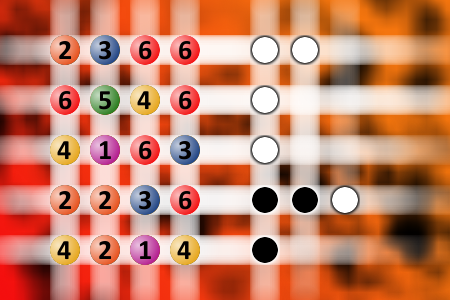Which is a winning combination of digits?
The computer chose a secret code (sequence of 4 digits from 1 to 6). Your goal is to find that code. Black circles indicate the number of hits on the right spot. White circles indicate the number of hits on the wrong spot.Correct answers: 11
#brainteasers #mastermind

Chihuahua at the vets
A man brings his Chihuahua to the vet.
They’re immediately taken to a room.
Soon, a Labrador walks in sniffs the Chihuahua, and leaves.
Then a cat comes in, stares at the dog, and leaves.
Finally, the doctor comes in, prescribes some medicine, and hands the man a $250 bill.
"This must be a mistake," the man says.
"I’ve only been here 20 minutes!"
"No mistake," the doctor says.
"It’s $100 for the Lab test,
$100 for the cat scan,
and $50 for the medicine."
They’re immediately taken to a room.
Soon, a Labrador walks in sniffs the Chihuahua, and leaves.
Then a cat comes in, stares at the dog, and leaves.
Finally, the doctor comes in, prescribes some medicine, and hands the man a $250 bill.
"This must be a mistake," the man says.
"I’ve only been here 20 minutes!"
"No mistake," the doctor says.
"It’s $100 for the Lab test,
$100 for the cat scan,
and $50 for the medicine."

